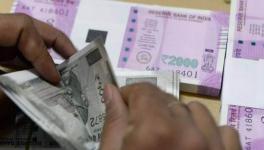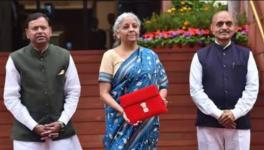Centre, States’ Revenue Collections Dip in FY 2020-21 Even as Expenditure Increases
Ahead of the 2021 budget announcements, PRS India has published its 5th State of State Finances report (2021-22) showing that the economic slowdown in 2019-20 impacted state finances in the form of nearly zero growth in revenue as compared to the previous year.
As the financial year 2020-2021 started with the COVID-19 induced national lockdown hitting all economic activity, it led to further decrease in revenue collection of both the Centre and states. On the other hand, there is an increased expenditure on account of providing relief to the vulnerable sections and increasing public investment to boost the economy, as per the report.
The report, based on the data from state budget documents of last 11 years, covers all states, and the union territories of Jammu and Kashmir and Delhi.
State Finances
In the 2019-20 period, the nominal GDP (i.e., real Gross Domestic Product plus inflation) grew at 7.2% as compared to the budget estimate of 12%. As a result, states saw a cut in the devolution they expected out of the Centre’s tax revenue while suffering an impact on their own tax revenue. As against a budgeted growth of 20% year-on-year, revenue receipts of states declined by 0.8%, according to the report. Consequently, the states’ expenditure only grew by 3.9% compared to an average growth of 13.8% during 2011-19.
Due to COVID-19, in the first half of 2020-21, economic activity contacted, leading to a decline in tax revenue. As per the data available for 21 states for Apr-Oct 2020, their revenue receipts declined by 13% from the same period last year.
On the other hand, there is a rise in expenditure for relief purposes and boosting economy and that has increased the reliance of states on borrowings to fund their expenditure, the report said.
The Centre has allowed all states to increase their borrowings this year to sustain expenditure. The fiscal deficit limit has been raised from 3% of GSDP (gross state domestic product) to 4% of GSDP and another 1% will be allowed later. Meanwhile, till December 11, 2020, states had borrowed Rs 4.6 lakh crore through market borrowings, which is 82.5% higher than their net market borrowings during the same period last year.
“While the focus of the 2021 budget announcements will be on the economic recovery from the impact of COVID-19, it’s helpful to note that the revenue receipts and expenditure were already on a downward trend in 2019-20,” the report notes.
Insufficient GST Compensation Cess Collection:
The report further says, “Lower GST collections have led to an increase in the compensation requirement from the centre, creating a challenge for its funding. Further risks have emerged from the persistent poor financial situation of state-owned power distribution companies.”
In 2019-20, states had the GST compensation requirement worth Rs 1.65 lakh crore, nearly double of the previous fiscal. This resulted in a shortfall of nearly Rs 70,000 crore, which was partly met through the 2020-21 cess collection. When a state’s GST revenue falls short of the 14% annual growth rate, in accordance with the GST (Compensation to States) Act, 2017, the Centre is required to compensate for the shortfall with cess collected on certain goods and services. While the compensation requirement doubled in this fiscal, the GST compensation cess collection registered a growth of just 0.4%.
The states’ compensation requirement is set to rise higher in 2020-21 to Rs 3 lakh crore, owing to a contraction in economic activity due to COVID-19 and resulting in a shortfall of about Rs 2.3 lakh crore. The Centre is estimated to meet Rs. 65,000 crore of above through cess collection, the remainder of the shortfall will be funded through back-to-back loans to states. A compensation grant would increase the revenue receipts of states and thus lower the fiscal deficit. But by meeting the shortfall through loans instead of grants, the fiscal deficit of states will again be widened. However, these borrowing will be counted over and above the fiscal deficit limit of 5% of GSDP allowed to states for 2020-21.
On future outlook, the report said that outstanding liabilities of state governments, which are debts accumulated from borrowings, have steadily increased due to one-time expenditure such as farm loan waivers and debt takeover under the UDAY scheme. As many as 26 states have estimated their outstanding liabilities to be greater than 20% of GSDP this fiscal year. The state’s net market borrowings almost doubling this year will put more strain on their finances.
Health Budget
As COVID-19 has shifted focus on the country’s healthcare. The budget allocation for healthcare by the Centre and states for the last six years show only a slight increase from 0.9% of the GDP to 1.1%, according to the report.
Moreover, the National Health Policy, 2017 recommends government expenditure on health to be increased to 2.5% of GDP by 2025. The policy also recommended the states to allocate at least 8% of its budget towards health by 2020. None of the larger states have allocated 8% of their budget towards health in 2020-21, the report says.
“To meet the National Health Policy’s 2.5% target by 2025, the Centre would have to increase its allocation significantly over the next four years, on average an increase of 0.35% of GDP each year,” it says.
Get the latest reports & analysis with people's perspective on Protests, movements & deep analytical videos, discussions of the current affairs in your Telegram app. Subscribe to NewsClick's Telegram channel & get Real-Time updates on stories, as they get published on our website.
























